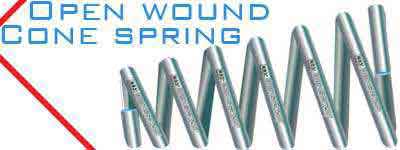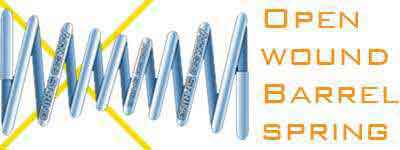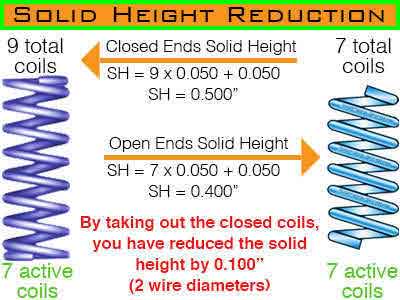Open Wound Springs
Definition: Springs that when being manufactured are wound open with pitch in between its coils.
The function of an open wound spring is to compress and store energy while doing so thus making the spring return to its original position after the previously applied force has been lifted or removed. There are several types of open wound springs. The various types of open wound springs are as follows:
Open Wound Compression Springs
The base design of all the different types of open wound springs comes from compression springs. Compression springs have a cylindrical shape; for this reason, they are also known as helical springs. They have pitch in between the coils and are the most common and economical type of spring. The ends of an open wound compression spring have variations between a certain number of closed wound coils to provide stability or open wound coils to provide more travel.

Conical Open Wound Springs
Conical open wound springs are just like compression springs except the diameters of the spring’s body are adjusted so that it makes a cone shape. These springs are normally used to provide stability to those when a compression spring runs the risk of bending or buckling due to a high slenderness ratio. For this reason is that their design is converted into a conical spring design. Conical open wound springs are also used to reduce solid height since the coil diameters may be adjusted to the point where the conical spring will perform a telescope effect.

Barrel Open Wound Springs
Barrel open wound springs are similar to conical open wound compression springs because of the adjustments done to the coils except barrel springs have either a concave or convex shape. These are also used to provide stability and to reduce solid height by adjusting the body coils just right to the point where you will be able to meet your requirements.

Magazine Open Wound Springs
Magazine open wound springs are basically compression springs with oval or rectangular coils. They get their name from the magazines of firearms since that is usually what they are used for. These springs may be used in case they need to be inserted into a rectangular or oval shaped hole or tube the way magazines have a rectangular shape.

Torsion Open Wound Springs
Torsional springs are usually close wound because they are required to produce torque but, in this case, your torsion spring is required to do more than just torque; it is required to compress as well. This is when you will need pitch in between that torsional spring’s coils so that it also becomes an open wound spring.

Open Wound Ends
This isn’t an actual spring type, it is a type of ends, open ends. Open wound ends give you the opportunity to get more elasticity out of your spring as well as a smaller solid height. For example, if you have a spring with 5 active coils (open wound coils) and 7 total coils (due to the close wound coils on the ends) you may take those closed coils out to be left with 5 active total coils. In another case, if your spring is too stiff and you need for this spring to travel more, you may turn one of the close wound end coils into an open wound coil thus giving you an additional active coil. Remember, more active coils make your spring weaker.





 Español
Español